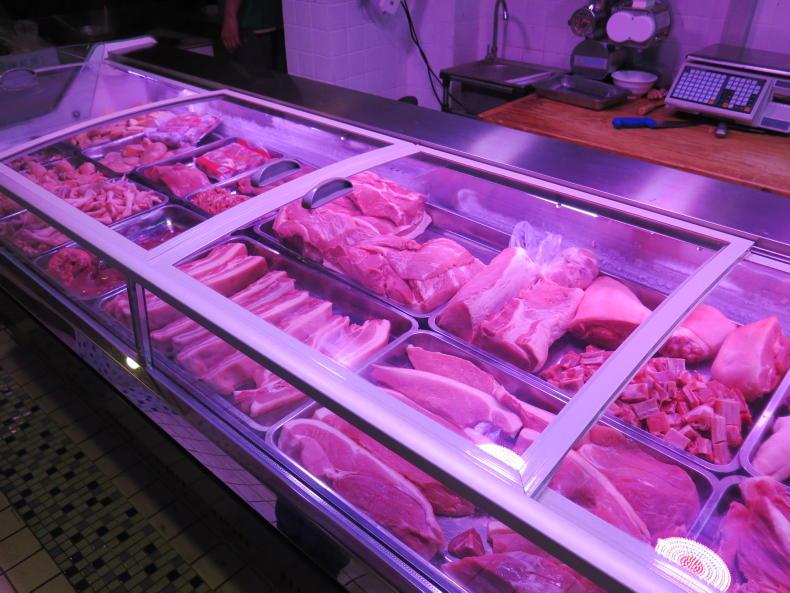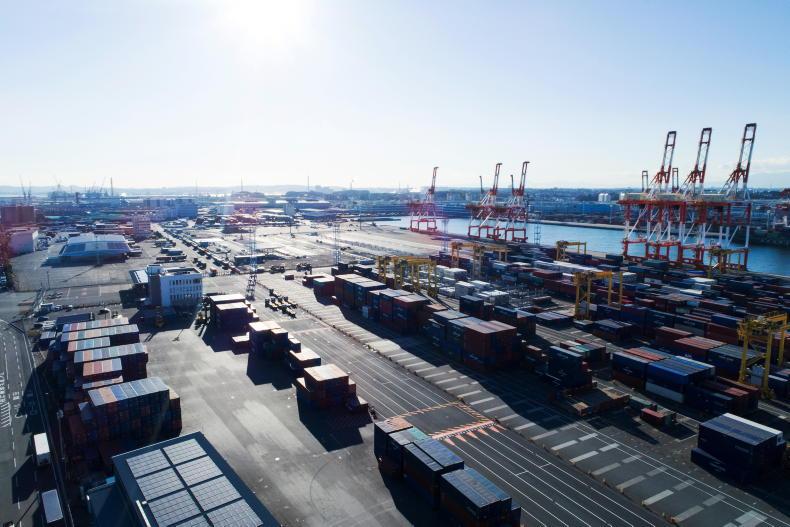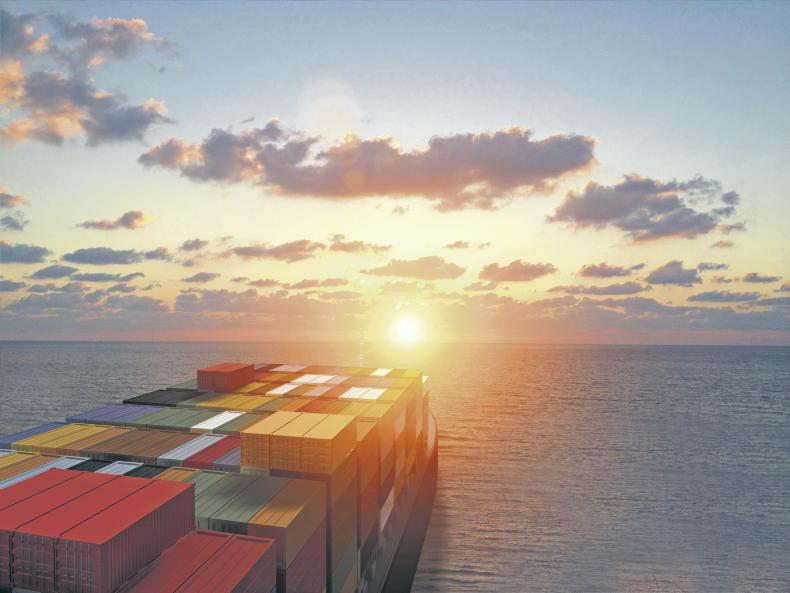The high levels of debt accumulated to keep pig farmers going through 18 months of unprecedented losses remains a “millstone” around farmers’ necks, despite more optimistic price signals for the coming year.
Teagasc figures show this debt to amount to €400,000 in 2022 on the average-sized 600-sow unit, when the assumption is made that the farm drew down the maximum €120,000 in pig supports made available last year.
However, lower feed costs and Teagasc’s “conservative” estimate of 2023’s pig price averaging €2.22/kg are expected to leave a modest reprieve from the red on units’ accounts.
Pig farmers are still losing an average €25,000 per month at current feed and pigmeat prices, with Teagasc calculating that an extra 20c/kg is needed just to break even on every pig sold.
There are 9% fewer sows in the country today than there were at the beginning of 2021, meaning that there will be a “fairly substantial” drop of 6,500 finished pigs per week heading for slaughter, according Teagasc’s Michael McKeon.
The sow herds in both Poland and the UK are back 18% on their size two years’ ago, while Germany and Denmark’s dropped 9%.
This drop-off in supply was reflected in price rises seen on the continent in recent weeks. Factories in France are currently paying €2.47/kg and German processors are paying €2.20/kg for pigs.
Calls for an immediate rise

An IFA protest outside Government buildings last year over the then lack of supports for pig farmers facing record debt.
An intense IFA pig campaign over 2022 saw farmers protesting 15 times at the gates of supermarkets and processors in efforts to secure higher prices and limit farm losses.
Pig chair Roy Gallie told an IFA pig farmer meeting on Thursday that rising pigmeat prices on the continent and tighter supplies here should justify an immediate factory price rise.
If higher market prices fail to materialise in factory cheques, more of the country’s remaining 230 commercial pig farmers could be forced out, further threatening the sector’s €1.5bn contribution to the national economy, he said.
Unexpected price cut
Farmers faced an unexpected price cut of 4c/kg in January to leave prices hovering around the €2/kg mark.
“I am calling on processors now to lead the price up. Tomorrow, you must give us the 4c/kg you took two weeks’ ago and – to recognise the strengthening pig price in other countries – add another 4c/kg to bring us back to where we were in December at the very least,” the pig chair stated.
“Do not erode the enthusiasm of some of the most talented, most entrepreneurial, most dynamic young farmers in this country.
“They now find themselves with a millstone of debt around their necks which must be recovered before the next down turn comes in the ever-rotating cycle of unregulated pig production. They need every rise in price that’s possible as quickly as is ever possible.”
Minister of State at the Department of Agriculture Martin Heydon said that work had been undertaken to increase pigmeat access to new markets over the past year to boost viability in the sector.
Last year, Malaysia opened to Irish pigmeat and the first shipment entered Mexico. Moves are being made to gain access to Thailand’s pork market.
He recognised that farmers had borne a wide gap between the prices they received from factories and the prices they needed to break even.
“The gap, thankfully, is not as wide as it was at times over 2022 but while I referenced a recovery in price earlier, I do know it has slipped again in recent weeks and we are back at the €2/kg mark or even possibly slightly below that,” the minister said.
The high levels of debt accumulated to keep pig farmers going through 18 months of unprecedented losses remains a “millstone” around farmers’ necks, despite more optimistic price signals for the coming year.
Teagasc figures show this debt to amount to €400,000 in 2022 on the average-sized 600-sow unit, when the assumption is made that the farm drew down the maximum €120,000 in pig supports made available last year.
However, lower feed costs and Teagasc’s “conservative” estimate of 2023’s pig price averaging €2.22/kg are expected to leave a modest reprieve from the red on units’ accounts.
Pig farmers are still losing an average €25,000 per month at current feed and pigmeat prices, with Teagasc calculating that an extra 20c/kg is needed just to break even on every pig sold.
There are 9% fewer sows in the country today than there were at the beginning of 2021, meaning that there will be a “fairly substantial” drop of 6,500 finished pigs per week heading for slaughter, according Teagasc’s Michael McKeon.
The sow herds in both Poland and the UK are back 18% on their size two years’ ago, while Germany and Denmark’s dropped 9%.
This drop-off in supply was reflected in price rises seen on the continent in recent weeks. Factories in France are currently paying €2.47/kg and German processors are paying €2.20/kg for pigs.
Calls for an immediate rise

An IFA protest outside Government buildings last year over the then lack of supports for pig farmers facing record debt.
An intense IFA pig campaign over 2022 saw farmers protesting 15 times at the gates of supermarkets and processors in efforts to secure higher prices and limit farm losses.
Pig chair Roy Gallie told an IFA pig farmer meeting on Thursday that rising pigmeat prices on the continent and tighter supplies here should justify an immediate factory price rise.
If higher market prices fail to materialise in factory cheques, more of the country’s remaining 230 commercial pig farmers could be forced out, further threatening the sector’s €1.5bn contribution to the national economy, he said.
Unexpected price cut
Farmers faced an unexpected price cut of 4c/kg in January to leave prices hovering around the €2/kg mark.
“I am calling on processors now to lead the price up. Tomorrow, you must give us the 4c/kg you took two weeks’ ago and – to recognise the strengthening pig price in other countries – add another 4c/kg to bring us back to where we were in December at the very least,” the pig chair stated.
“Do not erode the enthusiasm of some of the most talented, most entrepreneurial, most dynamic young farmers in this country.
“They now find themselves with a millstone of debt around their necks which must be recovered before the next down turn comes in the ever-rotating cycle of unregulated pig production. They need every rise in price that’s possible as quickly as is ever possible.”
Minister of State at the Department of Agriculture Martin Heydon said that work had been undertaken to increase pigmeat access to new markets over the past year to boost viability in the sector.
Last year, Malaysia opened to Irish pigmeat and the first shipment entered Mexico. Moves are being made to gain access to Thailand’s pork market.
He recognised that farmers had borne a wide gap between the prices they received from factories and the prices they needed to break even.
“The gap, thankfully, is not as wide as it was at times over 2022 but while I referenced a recovery in price earlier, I do know it has slipped again in recent weeks and we are back at the €2/kg mark or even possibly slightly below that,” the minister said.











SHARING OPTIONS